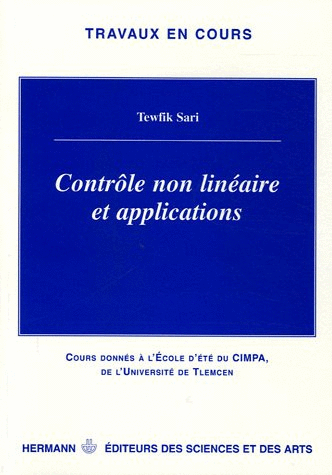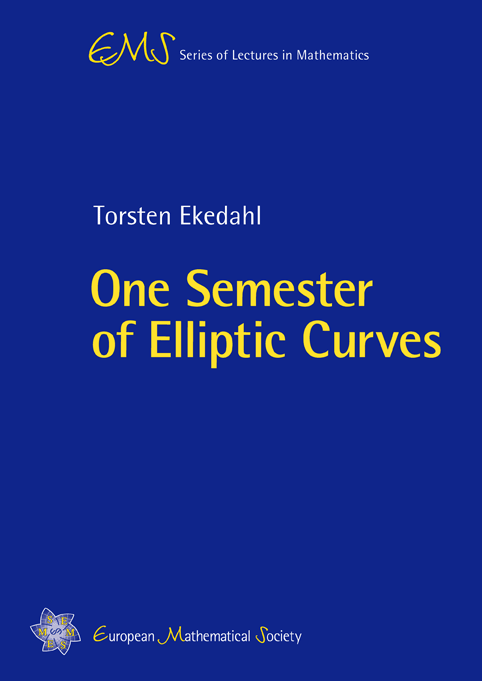Djukic, D., Jankovic, V.Z., Matic, I., Petrovic, N.
The IMO Compendium
A Collection of Problems Suggested for The International
Mathematical Olympiads: 1959-2004
Series: Problem Books in Mathematics
2006, XIV, 746 p. 200 illus., Hardcover
ISBN: 0-387-24299-6
About this book
The International Mathematical Olympiad (IMO) has within its
almost 50-year-old history become the most popular and
prestigious competition for high-school students interested in
mathematics. Only six students from each participating country
are given the honor of participating in this competition every
year. The IMO represents not only a great opportunity to tackle
interesting and challenging mathematics problems, it also offers
a way for high school students to measure up with students from
the rest of the world.
The IMO has sparked off a burst of creativity among enthusiasts
in creating new and interesting mathematics problems. In an
extremely stiff competition, only six problems are chosen each
year to appear on the IMO. The total number of problems proposed
for the IMOs up to this point is staggering and, as a whole, this
collection of problems represents a valuable resource for all
high school students preparing for the IMO.
Until now it has been almost impossible to obtain a complete
collection of the problems proposed at the IMO in book form.
"The IMO Compendium" is the result of a two year long
collaboration between four former IMO participants from
Yugoslavia, now Serbia and Montenegro, to rescue these problems
from old and scattered manuscripts, and produce the ultimate
source of IMO practice problems. This book attempts to gather all
the problems and solutions appearing on the IMO, as well as the
so-called "short-lists", a total of 864 problems. In
addition, the book contains 1036 problems from various "long-lists"
over the years, for a grand total of 1900 problems.
In short, "The IMO Compendium" is the ultimate
collection of challenging high-school-level mathematics problems.
It will be an invaluable resource, not only for high-school
students preparing for mathematics competitions, but for anyone
who loves and appreciates math.
Table of contents
Auteur : SARI
CONTROLE NON LINEAIRE
 Caracteristiques
Caracteristiques
Parution : 07 2005
Pages : 266
Isbn : 2-7056-6511-0
Reliure : Paperback
Table des matieres
Introduction a la theorie du controle An introduction to optimal
control Controllability of partial differential equations
Singular perturbations methods in control theory Theorie du
controle et equations algebriques de Riccati Equations
differentielles a second membre discontinu
X. Sheldon Lin, Society of Actuaries
Introductory Stochastic Analysis for Finance and Insurance
ISBN: 0-471-71642-1
Hardcover
248 pages
March 2006
Introductory Stochastic Analysis for Finance and Insurance
introduces readers to the topics needed to master and use basic
stochastic analysis techniques for mathematical finance. The
author presents the theories of stochastic processes and
stochastic calculus and provides the necessary tools for modeling
and pricing in finance and insurance. Practical in focus, the
book's emphasis is on application, intuition, and computation,
rather than theory.
Consequently, the text is of interest to graduate students,
researchers, and practitioners interested in these areas. While
the text is self-contained, an introductory course in probability
theory is beneficial to prospective readers.
This book evolved from the author's experience as an instructor
and has been thoroughly classroom-tested. Following an
introduction, the author sets forth the fundamental information
and tools needed by researchers and practitioners working in the
financial and insurance industries:
Overview of Probability Theory
Discrete-Time stochastic processes
Continuous-time stochastic processes
Stochastic calculus: basic topics
The final two chapters, Stochastic Calculus: Advanced Topics and
Applications in Insurance, are devoted to more advanced topics.
Readers learn the Feynman-Kac formula, the Girsanov's theorem,
and complex barrier hitting times distributions. Finally, readers
discover how stochastic analysis and principles are applied in
practice through two insurance examples: valuation of equity-linked
annuities under a stochastic interest rate environment and
calculation of reserves for universal life insurance.
Throughout the text, figures and tables are used to help simplify
complex theory and pro-cesses. An extensive bibliography opens up
additional avenues of research to specialized topics.
Ideal for upper-level undergraduate and graduate students, this
text is recommended for one-semester courses in stochastic
finance and calculus. It is also recommended as a study guide for
professionals taking Causality Actuarial Society (CAS) and
Society of Actuaries (SOA) actuarial examinations.
Contents
List of Figures.
List of Tables.
Preface.
1. Introduction.
2. Overview of Probability Theory.
3. Discrete-Time Stochastic Processes.
4. Continuous-Time Stochastic Processes.
5. Stochastic Calculus: Basic Topics.
6. Stochastic Calculus: Advanced Topics.
7. Applications in Insurance.
References.
Topic Index.
Daniel J. Duffy
Finite Difference Methods in Financial Engineering:
A Partial Differential Equation Approach
ISBN: 0-470-85882-6
Hardcover
440 pages
May 2006
The world of quantitative finance (QF) is one of the fastest
growing areas of research and its practical applications to
derivatives pricing problem. Since the discovery of the famous
Black-Scholes equation in the 1970's we have seen a surge in the
number of models for a wide range of products such as plain and
exotic options, interest rate derivatives, real options and many
others. Gone are the days when it was possible to price these
derivatives analytically. For most problems we must resort to
some kind of approximate method.
In this book we employ partial differential equations (PDE) to
describe a range of one-factor and multi-factor derivatives
products such as plain European and American options, multi-asset
options, Asian options, interest rate options and real options.
PDE techniques allow us to create a framework for modeling
complex and interesting derivatives products. Having defined the
PDE problem we then approximate it using the Finite Difference
Method (FDM). This method has been used for many application
areas such as fluid dynamics, heat transfer, semiconductor
simulation and astrophysics, to name just a few. In this book we
apply the same techniques to pricing real-life derivative
products. We use both traditional (or well-known) methods as well
as a number of advanced schemes that are making their way into
the QF literature:
Crank-Nicolson, exponentially fitted and higher-order schemes for
one-factor and multi-factor options
Early exercise features and approximation using front-fixing,
penalty and variational methods
Modelling stochastic volatility models using Splitting methods
Critique of ADI and Crank-Nicolson schemes; when they work and
when they don't work
Modelling jumps using Partial Integro Differential Equations (PIDE)
Free and moving boundary value problems in QF
Included with the book is a CD containing information on how to
set up FDM algorithms, how to map these algorithms to C++ as well
as several working programs for one-factor and two-factor models.
We also provide source code so that you can customize the
applications to suit your own needs.
Table of contents
Brian S Everitt / Institute of Psychiatry, King's College, London, UK
Torsten Hothorn / Insitut fur Medizininformatik, Erlangen,
Germany
A Handbook of Statistical Analyses Using R
ISBN: 1584885394
Publication Date: 2/17/2006
Number of Pages: 304
Explains systematically how to use R to perform a wide variety of
statistical analyses
Emphasizes practical application and interpretation of results
rather than focusing on the theory behind the analyses
Offers an introduction to R, including a summary of the most
important features
Covers simple inference, generalized linear models, multilevel
models, longitudinal data, classification and regression trees,
discriminant analysis, and much more
Includes abundant figures and exercises to demonstrate the
capabilities of R and reinforce the methods presented
R is dynamic, to say the least. More precisely, it is organic,
with new functionality and add-on packages appearing constantly.
And because of its open-source nature and free availability, R is
quickly becoming the software of choice for statistical analysis
in a variety of fields.
Doing for R what Everitt's other Handbooks have done for S-PLUS,
STATA, SPSS, and SAS, A Handbook of Statistical Analyses Using R
presents straightforward, self-contained descriptions of how to
perform a variety of statistical analyses in the R environment.
From simple inference to recursive partitioning and cluster
analysis, eminent experts Everitt and Hothorn lead you
methodically through the steps, commands, and interpretation of
the results, addressing theory and statistical background only
when useful or necessary. They begin with an introduction to R,
discussing the syntax, general operators, and basic data
manipulation while summarizing the most important features.
Numerous figures highlight R's strong graphical capabilities and
exercises at the end of each chapter reinforce the techniques and
concepts presented. All data sets and code used in the book are
available as a downloadable package from CRAN, the R online
archive.
A Handbook of Statistical Analyses Using R is the perfect guide
for newcomers as well as seasoned users of R who want concrete,
step-by-step guidance on how to use the software easily and
effectively for nearly any statistical analysis.
Contents
Torsten Ekedahl (University of Stockholm, Sweden):
One Semester of Elliptic Curves
 EMS Series of Lectures in Mathematics
EMS Series of Lectures in Mathematics
ISBN 3-03719-015-9
March 2006, 140 pages, softcover, 17.0 cm x 24.0 cm.
These lecture notes grew out of a one semester introductory
course on elliptic curves given to an audience of computer
science and mathematics students, and assume only minimal
background knowledge. After having covered basic analytic and
algebraic aspects, putting special emphasis on explaining the
interplay between algebraic and analytic formulas, they go on to
some more specialized topics. These include the j-function from
an algebraic and analytic perspective, a discussion of elliptic
curves over finite fields, derivation of recursion formulas for
the division polynomials, the algebraic structure of the torsion
points of an elliptic curve, complex multiplication, and modular
forms.
In an effort to motivate basic problems the book starts very
slowly, but considers some aspects such as modular forms of
higher level which are not usually treated. It presents more than
100 exercises and a Mathematica (TM) notebook that treats a
number of calculations involving elliptic curves.
The book is aimed at students of mathematics with a general
interest in elliptic curves but also at students of computer
science interested in their cryptographic aspects.
Contents
Peter Kunkel (University of Leipzig, Germany),
Volker Mehrmann (Technical University of Berlin, Germany):
Differential-Algebraic Equations
Analysis and Numerical Solution
EMS Textbooks in Mathematics
ISBN 3-03719-017-5
February 2006, 392 pages, hardcover, 16.5 cm x 23.5 cm.
Differential-algebraic equations are a widely accepted tool for
the modeling and simulation of constrained dynamical systems in
numerous applications, such as mechanical multibody systems,
electrical circuit simulation, chemical engineering, control
theory, fluid dynamics and many others.
This is the first comprehensive textbook that provides a
systematic and detailed analysis of initial and boundary value
problems for differential-algebraic equations. The analysis is
developed from the theory of linear constant coefficient systems
via linear variable coefficient systems to general nonlinear
systems. Further sections on control problems, generalized
inverses of differential-algebraic operators, generalized
solutions, and differential equations on manifolds complement the
theoretical treatment of initial value problems. Two major
classes of numerical methods for differential-algebraic equations
(Runge--Kutta and BDF methods) are discussed and analyzed with
respect to convergence and order. A chapter is devoted to index
reduction methods that allow the numerical treatment of general
differential-algebraic equations. The analysis and numerical
solution of boundary value problems for differential-algebraic
equations is presented, including multiple shooting and
collocation methods. A survey of current software packages for
differential-algebraic equations completes the text.
The book is addressed to graduate students and researchers in
mathematics, engineering and sciences, as well as practitioners
in industry. A prerequisite is a standard course on the numerical
solution of ordinary differential equations. Numerous examples
and exercises make the book suitable as a course textbook or for
self-study.
Contents
 Caracteristiques
Caracteristiques EMS Series of Lectures in Mathematics
EMS Series of Lectures in Mathematics